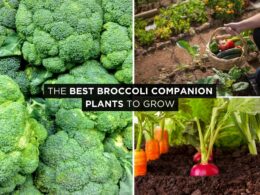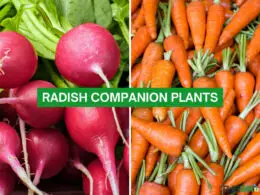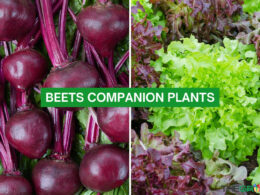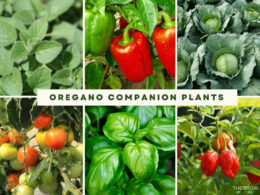In This Article Show
With over 13 years of experience cultivating a diverse range of plants, I’ve picked up a few tricks along the way. One practice that I’ve found to be remarkably beneficial is companion planting – a traditional method that can dramatically enhance the health and yield of your plants. Today, we’ll be focusing on a particularly popular leafy green, kale, and its best companion plants.
Kale is a nutrient-dense, hardy plant that has become a staple in many vegetable gardens, including mine. But did you know that you can boost its growth and protect it from pests by planting it alongside specific companion plants? It’s a little gardening trick that can make a big difference.
In this comprehensive guide, we’re going to explore everything about kale companion plants. We will delve into the concept of companion planting, understand kale’s unique needs, and provide a detailed list of its perfect partners in the garden.
I’ll also share some insights on the plants to avoid placing near kale to prevent any potential growth hindrances. Let’s get started.
Understanding Kale
Kale, also known as “the queen of greens,” is a robust and nutrient-dense plant that can lend a nutritious boost to any meal. Growing kale in your garden is an excellent choice for many reasons.
This plant, with its deep green or purple leaves and charming curled edges, is not just a delight to look at but also is highly adaptable to varying climates, making it a staple in many gardens around the globe.
Get Gardening For Beginners
Our new EBOOK shows newcomers and green thumbs alike a step by step guide to growing the garden of their dreams.
In my 13 years of gardening, I’ve found that kale is a rather low-maintenance plant, but there are a few key things it needs to thrive.
1. Light
Kale loves the sun, but it also appreciates a little shade during the hottest part of the day. Typically, kale requires between 6 and 7 hours of sunlight daily.
2. Soil
Kale grows best in well-drained, fertile soil with a pH level between 6.0 and 7.0. Amending your soil with compost or organic matter can give your kale the nutrient boost it needs to grow large and healthy.
3. Water
Regular watering is essential for kale. The soil should always be kept moist but never waterlogged. I find that a deep, slow watering technique works best.
4. Nutrients
Kale is a heavy feeder. It enjoys soil rich in organic matter and benefits from regular feedings of a balanced organic fertilizer.
Now, let’s talk about pests. Kale is unfortunately a favorite of many common garden pests including cabbage worms, aphids, and slugs. But don’t worry – this is where companion planting can come to the rescue! The right companion plants can help deter these pests and even attract beneficial insects, offering a natural, chemical-free way to protect your kale plants.
Understanding the unique needs and challenges of kale is the first step toward successful companion planting.
Get Gardening For Beginners
Our new EBOOK shows newcomers and green thumbs alike a step by step guide to growing the garden of their dreams.
Best Companion Plants for Kale
Companion planting is a time-tested, natural way to enhance your garden’s productivity and health. By choosing the right combination of plants, you can encourage growth, deter pests, and even improve the flavor of your vegetables. Let’s take a deep dive into the top companion plants for kale and understand why they are beneficial.
1. Beans
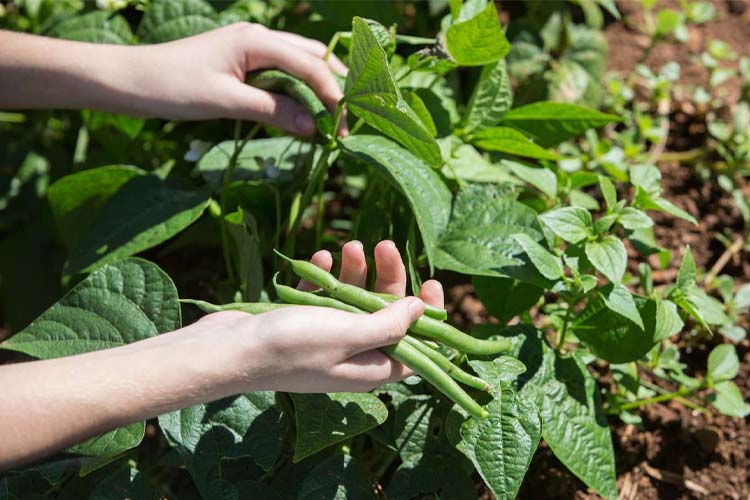
Legumes like beans have a unique symbiotic relationship with bacteria known as rhizobia, which reside in their root nodules and convert atmospheric nitrogen into a form that plants can use.
This is a process known as nitrogen-fixing, and it’s particularly beneficial for leafy green plants like kale which require high nitrogen levels. Beans grow upwards, meaning they won’t compete for space with your kale, and they also help break the pest cycle.
2. Beets
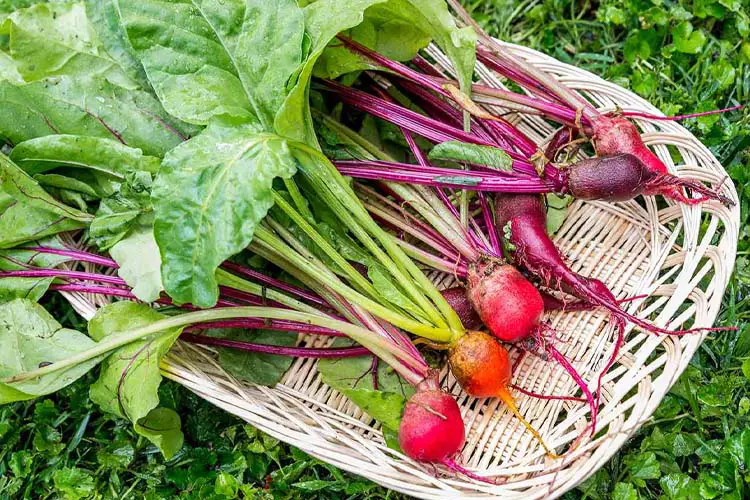
A lovely companion for kale, beets thrive under similar conditions. They won’t compete for space, as kale grows upwards while beets are root vegetables. The beetroot also helps to aerate the soil, improving water and nutrient access for kale. Plus, the beet’s leafy tops can provide a bit of welcome shade for kale during the hot midday sun.
3. Celery
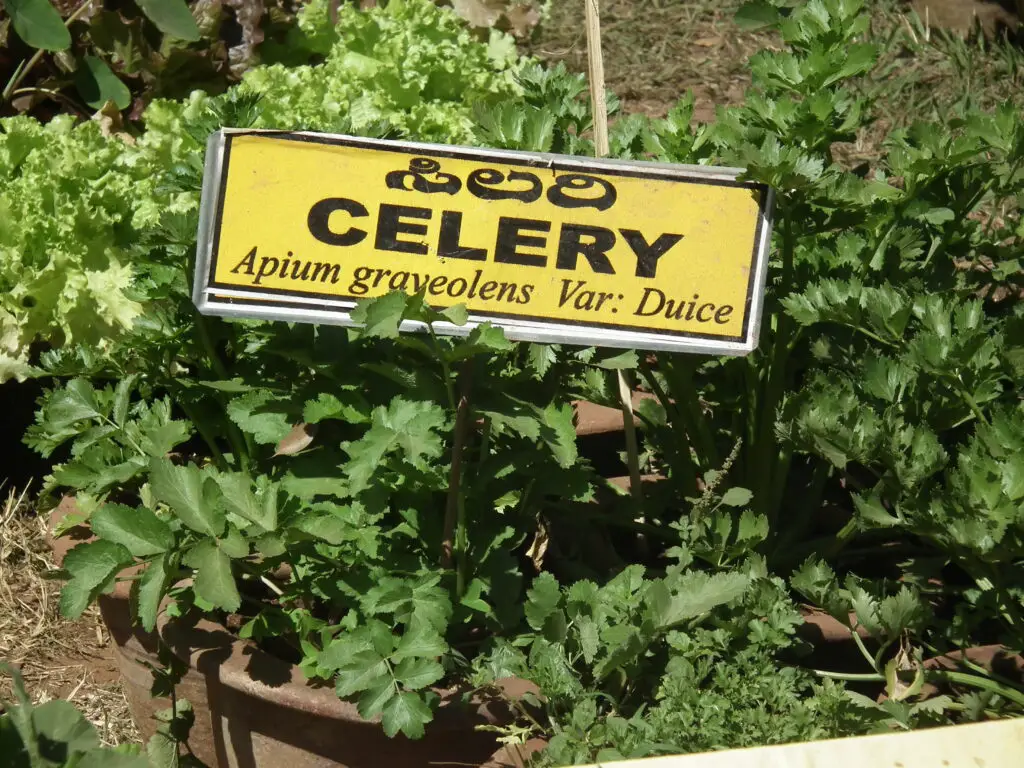
Celery and kale are good neighbors in the garden. Celery’s strong scent can deter white cabbage butterflies, a common pest for kale. Plus, as celery is a low-growing plant, it won’t compete with kale for sunlight.
4. Cucumbers
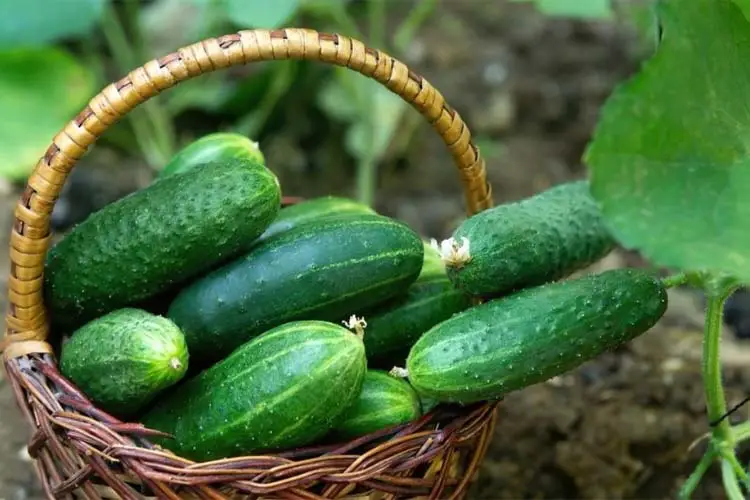
Cucumbers, with their broad leaves, can offer a sort of living mulch, providing shade for kale during hot, sunny days and helping to retain moisture in the soil. They also don’t require the same nutrients as kale, reducing competition and promoting healthier growth for both plants.
5. Dill
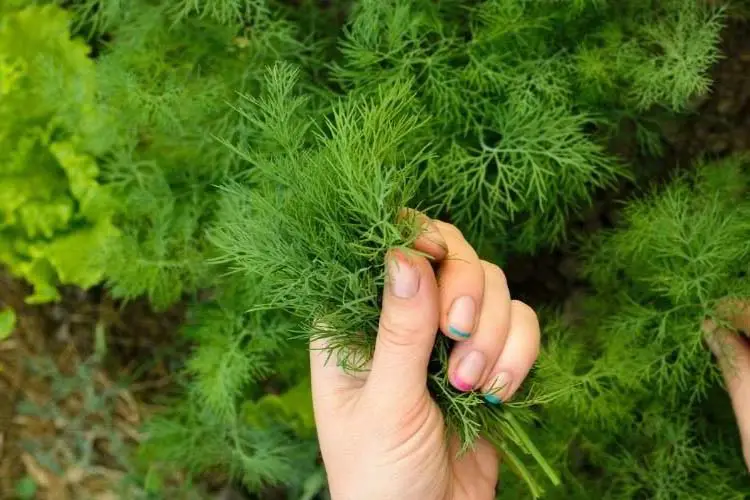
This aromatic herb not only enhances the flavor of your dishes but also serves as a great companion for kale. Dill attracts beneficial insects such as wasps and other predatory bugs that keep the populations of pests like aphids, which often plague kale, under control.
6. Garlic
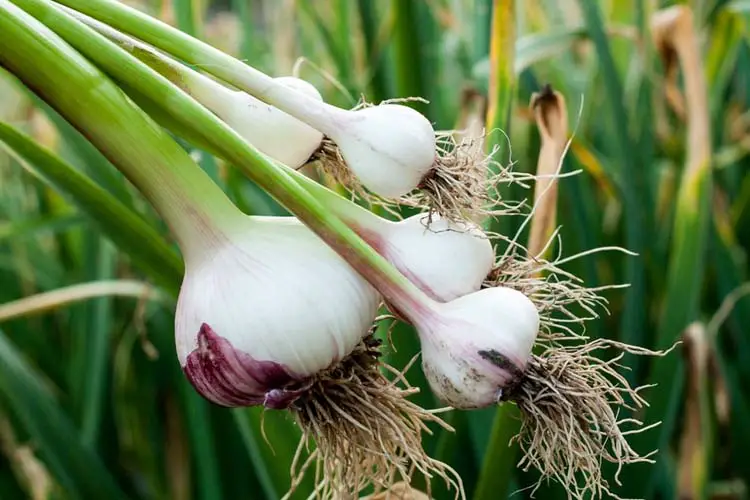
Garlic’s potent scent can serve as a powerful deterrent against pests. You create a natural barrier against aphids and cabbage loopers by planting garlic among your kale. Garlic also accumulates sulfur, a naturally occurring fungicide that can help protect your kale from disease.
7. Mint
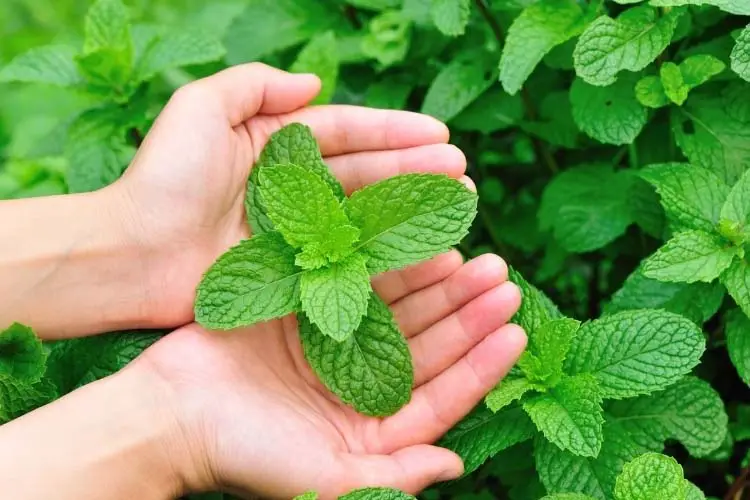
Mint is another strongly-scented herb that can confuse and repel pests. By planting it near your kale, you’ll deter pests like cabbage moths and aphids.
However, mint’s vigorous growth can be a problem if not controlled, so consider planting mint in pots near your kale to get the benefits without the invasiveness.
8. Nasturtiums

The vibrant, edible blooms of nasturtiums attract aphids away from your kale, acting as a ‘trap crop.’ They also attract beneficial insects and pollinators to your garden. The peppery flavor of nasturtium leaves can add a nice zing to salads, making them a great addition to your garden for multiple reasons.
9. Potatoes
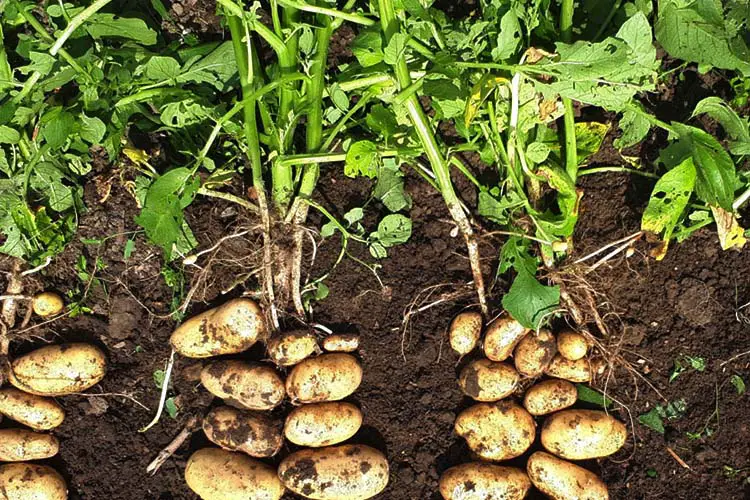
The hearty potato plant can be a good friend to kale. They enjoy similar growing conditions and can help suppress weeds that might compete with kale for nutrients. The broad leaves of potato plants may also provide a bit of shade, keeping your kale cool during the hot afternoons.
10. Rosemary
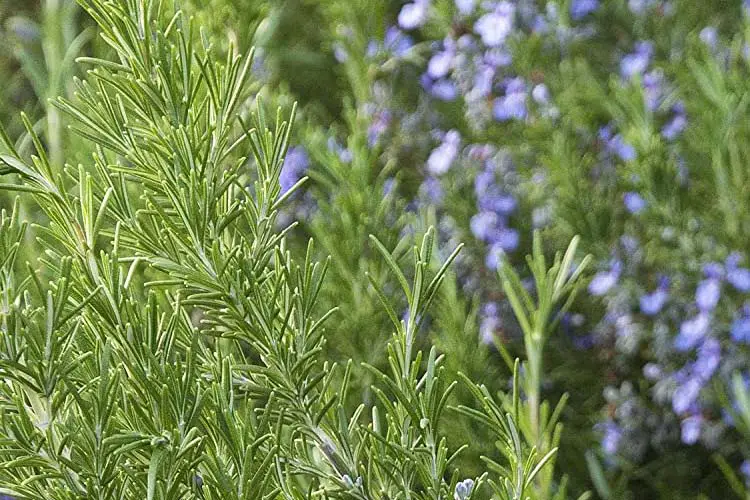
The strong scent of rosemary confuses and repels pests, protecting your kale from invaders like the cabbage fly. Rosemary is a woody perennial that can provide year-round benefits to your garden. It’s also a wonderful herb to have on hand for a variety of culinary uses.
Kale Companion Planting Chart
| Companion Plant | Benefits for Kale | How to Plant with Kale |
|---|---|---|
| Beans | Fixes nitrogen in the soil, enhances kale’s growth | Plant beans alongside kale but with enough space to allow the beans to climb and grow upwards |
| Beets | Deters pests, and accumulates sulfur to protect kale from disease | Plant beets around the base of the kale plants |
| Celery | Deters white cabbage butterflies | Plant celery interspersed with your kale |
| Cucumbers | Provides shade, helps retain soil moisture | Plant cucumbers next to kale, ensuring enough space for the spreading habit of the cucumber vines |
| Dill | Attracts beneficial insects, repels pests | Suppresses weed growth provides some shade |
| Garlic | Plant dill near kale, but with enough space for the dill to flourish without overshadowing the kale | Intersperse garlic cloves among your kale plants |
| Mint | Confuses and repels pests | Plant mint in a pot nearby to prevent it from becoming invasive |
| Nasturtiums | Attracts pests away from kale, attracts beneficial insects | Plant nasturtiums around the border of your kale patch |
| Potatoes | Suppresses weed growth and provides some shade | Plant potatoes near kale, providing ample space for potato foliage to spread |
| Rosemary | Confuses and repels pests | Plant rosemary near the edges of your kale bed to deter pests from entering |
How to Implement Companion Planting with Kale in Your Garden
Now that we’ve covered the best companions for kale, let’s look at practical steps to implement companion planting in your garden. The aim is to create a harmonious ecosystem that enhances plant growth, deters pests, and maximizes yield.
1. Plan Your Garden Layout
Before you start planting, it’s crucial to plan your garden layout. Consider the space each plant requires, the height of mature plants, and their sun requirements. Draw a map of your garden bed, marking where each plant will be placed. Remember to rotate your crops each year to prevent disease build-up and nutrient depletion.
2. Prepare the Soil
Each plant has different soil requirements. Most vegetables, including kale, prefer a well-drained, loamy soil that is rich in organic matter. Enrich your soil with compost or well-rotted manure before planting, and ensure the soil pH is between 6.0 and 7.0, optimal for most vegetables.
3. Planting
When it’s time to plant, consider the needs of each plant. Beans, for example, should be planted a little away from the kale to allow them to climb and grow upwards. Meanwhile, low-growing plants like beets or celery can be planted around the base of the kale. Remember to give each plant enough space to grow without competition.
4. Care and Maintenance
Ensure your garden is well-watered, especially during dry spells. Mulch around your plants to help retain moisture and suppress weed growth. Regularly check your plants for any signs of pests or diseases.
5. Harvesting
Harvest your kale and its companions as they mature. Regular harvesting encourages further production, especially in the case of beans, cucumbers, and herbs.
6. End-of-Season Care
At the end of the growing season, remove spent plants and compost them if they are disease-free. Turn the soil over and consider planting a cover crop to replenish soil nutrients for the next growing season.
Plants to Avoid Near Kale
While companion planting can bring significant benefits to your kale plants, it’s equally important to know which plants don’t make good neighbors. Some plants can compete for nutrients, attract pests, or carry diseases that could harm your kale. Here are a few plants to avoid placing near kale:
1. Tomatoes
Despite their popularity in the vegetable garden, tomatoes make poor companions for kale. They are part of the nightshade family, which is susceptible to similar pests and diseases as kale, increasing the risk of problems.
2. Strawberries
Strawberries can attract slugs, a common pest for kale. To protect your kale, it’s best to keep these two plants separate.
3. Other Brassicas
Kale is part of the brassica family, which includes broccoli, cabbage, cauliflower, and Brussels sprouts. These plants share many of the same pests and diseases, so planting them together can lead to increased issues. Practice crop rotation with brassicas to prevent the buildup of pests and diseases in the soil.
4. Grapes
Grapes require a lot of nutrients from the soil and can compete with kale, affecting its growth and health. It’s best to plant them in separate areas of your garden.
Frequently Asked Questions about Kale Companion Planting
Can I grow kale in a container with companion plants?
Yes, kale grows well in containers and can be paired with suitable companions. However, make sure the container is large enough to accommodate the roots of all plants. Mint and dill are excellent compact companions for container-grown kale.
Can kale and spinach be planted together?
Yes, kale and spinach make good companions. They have similar watering and sun requirements, and their differing root depths reduce nutrient competition. However, remember to provide enough space for each plant to grow.
How far apart should I plant kale and its companions?
Plant spacing can vary depending on the specific companion plant. As a general rule, provide enough space for each plant to grow without competition. For example, beans, which grow upwards, can be planted close to kale, while sprawling plants like cucumbers need more space.
Do companion plants affect the taste of kale?
While companion planting mainly affects plant health and pest resistance, some gardeners believe it can subtly influence flavor. For instance, planting aromatic herbs nearby might enhance kale’s flavor, though more research is needed to confirm this.
How do I manage pest control with companion planting?
Companion planting can significantly aid in pest control. Some plants, like garlic and rosemary, repel certain pests with their strong aromas. Others, like nasturtiums, act as trap crops, attracting pests away from your kale. Also, consider plants that attract beneficial insects, which prey on pests.
Wrapping it up
Companion planting is a centuries-old practice that can significantly enhance the health, growth, and yield of your garden. By strategically planting certain crops together, you can harness nature’s wisdom to create a thriving, biodiverse, and sustainable gardening system.
In the case of kale, the right companions can offer numerous benefits. From improving soil fertility with beans to using aromatic herbs like garlic and rosemary to deter pests, or even employing beets to aerate the soil and improve water access. It’s all about creating a harmonious garden ecosystem where each plant has a role to play.
However, remember that not all plants make good neighbors. Keep your kale away from other brassicas, tomatoes, strawberries, and grapes to prevent competition for nutrients, the attraction of pests, or the spread of diseases.






